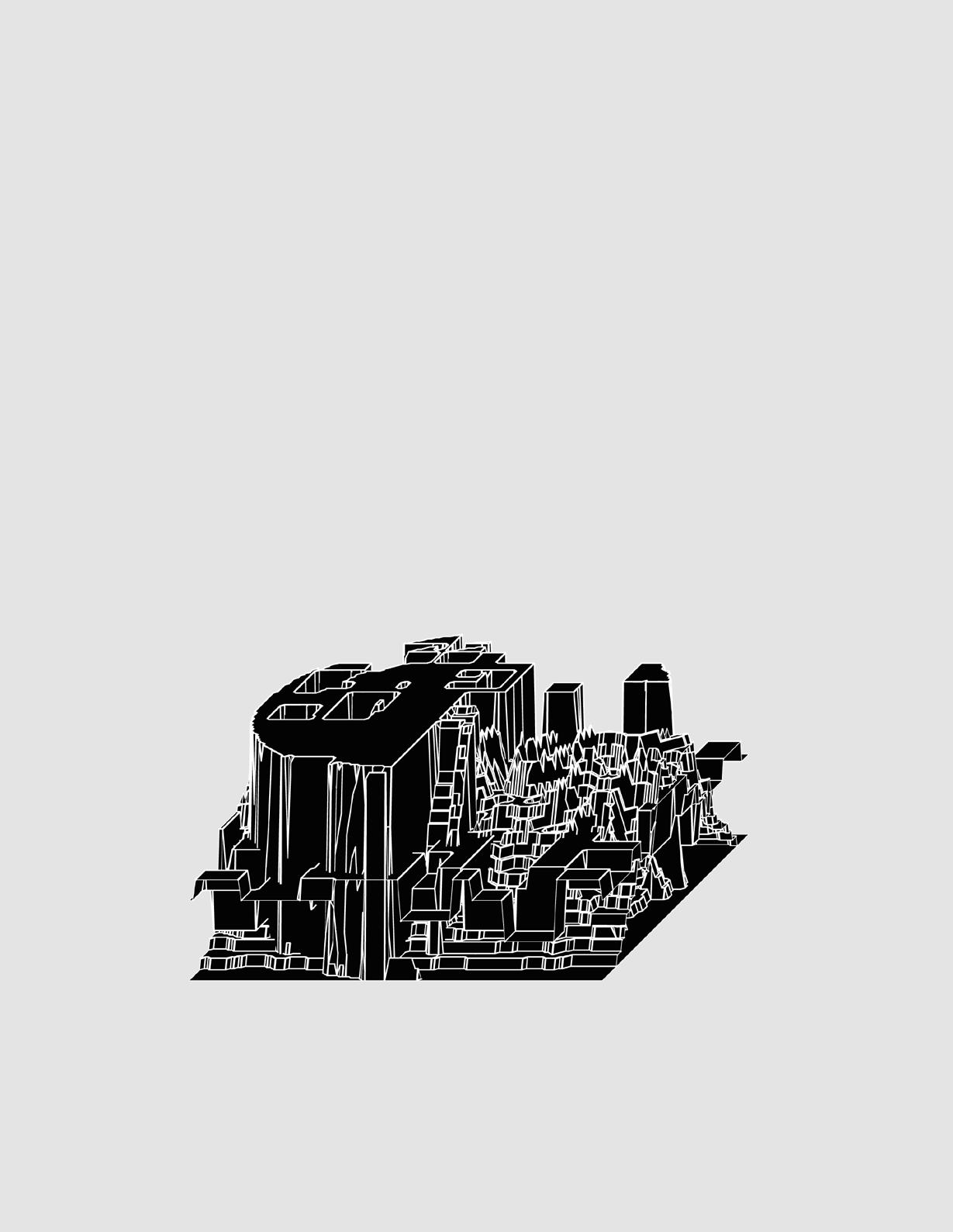

MOUNTAIN FORM

Mountain Form

Analogizing real and abstract images of mountain forms
evidences them as fundamental to visual
language.
Their interiors hide in plain sight. The Super Kamiokande, 1Km below ground co-opts mass to shield experiments from radiation. Hans Scharoun's Berlin Philharmonic inverts vineyard surfaces under a mountain. Toyo Ito's Tai Chung Opera House scales porosity to spatialize rock. Mountain identity contains massing, interior, ground, and aperture.
John Hejduk's Memorial Towers in Santiago de Compostela, Spain embody fundamental identity and memory in architecture. They stack. Cores attach. Void is past. Solid is present. Hejduk's poetics uncannily resemble mountain language. Stacks slope. Paths carve. Glass imitates mass.
Memorial Towers designed by John Hejduk, Galicia, Spain
Scaling domestic voids intimates public space


Sound traveling through Casa da Musica, Sehr Yaqoob
Adolf Loos, house for the Vienna Werkbundiedlung, Vienna 1930-1932.




Super-kamiokande, Gifu Prefecture, Japan
Scaling small domestic areas intimates large public spaces. OMA's Casa da Musica in Porto intersects interior and exterior voids. Standing in them intensifies ambiguity between the building surface's apparent mass and function as wrapper. The identities of mass exist in tension between a surface peak and topological interconnection.
Connecting stages to spaces adapts Raumplan into public space. Adolph Loos's Muller House exhibits domestic life to inhabitants. On the surface of a mountain, activity is mostly public. Anyone from above can witness what is below. Raumplan separates spaces to secure actor and observer. Distance on mountain surfaces sepa-
rate visitors. Transparent tall buildings operate under the same principle. Privacy is on display. Architecture secures performers. This property transcends building scale from huts to cities.
They are created through wrinkling of the earth's crust. Only the surface is visible. Observing a cave is simultaneously the interior and exterior. Caves introduce environmental conditions. Darkening, humidifying, cooling with depth.


A diagram of Hans Scharoun's Berlin Philharmonic as a mountain Wrapping
Mountains inspire awe, safety, and exploration. Caves
are both interior and exterior



Aggregation from a source heightens a plane into a bump. Persisting, mountains form from indeterministic acts of optimism. These events formally occur as peaks over time. Manipulating time and force inputs varies peak amplitudes. Mountain form can then be a formulaic metaphor of encoded variables. When given values, these variables can be anything -- spatial, cultural, environmental, etc.
Generating mountains can be done algorithmically. They are functions of functions: waves, noise, cells, sawtooths, decays, alternations, maxima, minima, maps, graphs.
Generating 100 mountains inspires the project. Each mesh is a tool for spatializing mass. Over, under, and between surfaces, implying space generates extreme forms. The project proposes landscape generation as a tool for designing intimate locales.
This project is relevant to the city as aggregation of built mass. The urban condition of accumulation reaches the uncoordinated yet primordial mountain condition. Despite the popularity of formal grids, mountain form intervenes at a time when public urban spaces must delicately transcend private institutions.
Mountains are fundamental forms
Landscape, built and geological are natural waveforms
Credits
Thesis Advisor: Anna Neimark
Thesis Prep Advisor: Damjan Jovanovik
History & Theory Advisor: Erik Ghenoiu
Model Building: Pan Tan, Benjamin Jepsky
Blender A.N.T Ladscape Plugin

